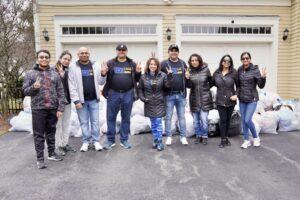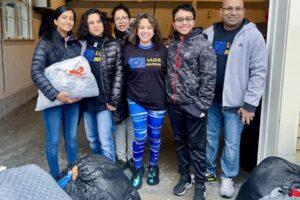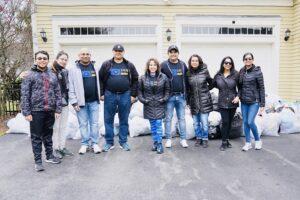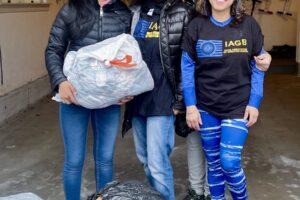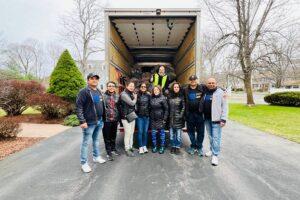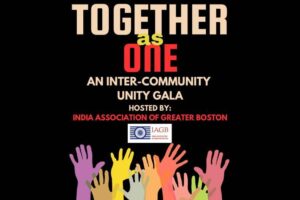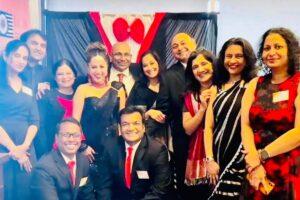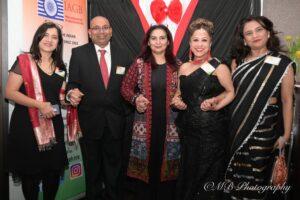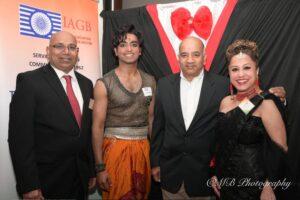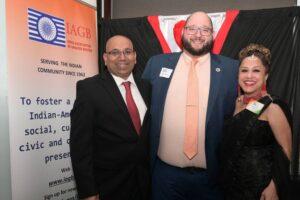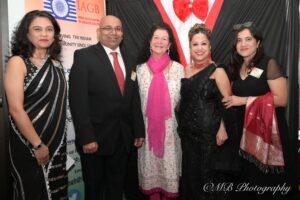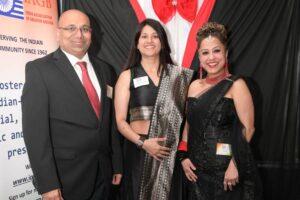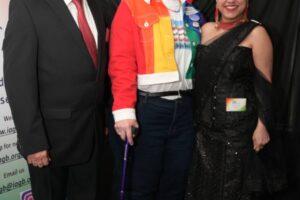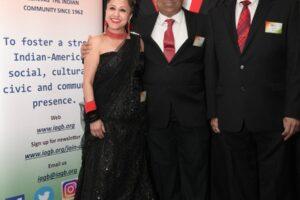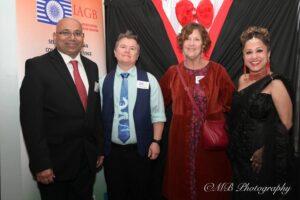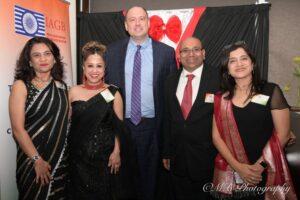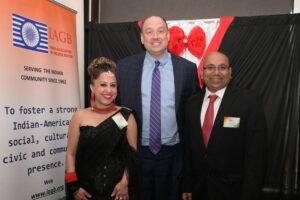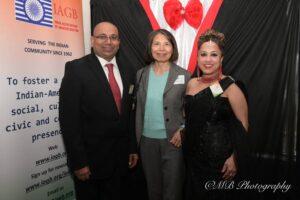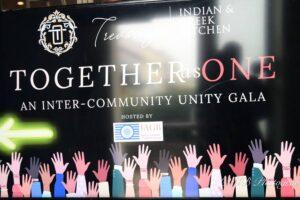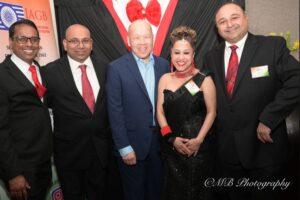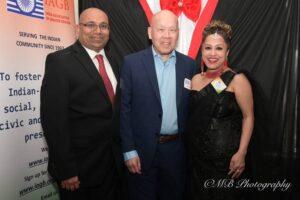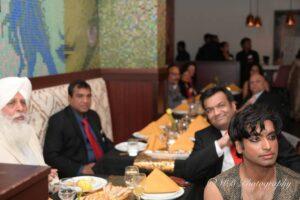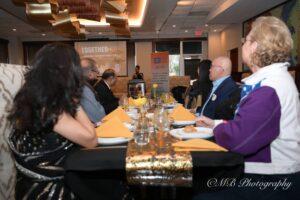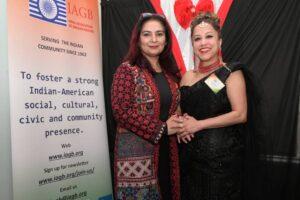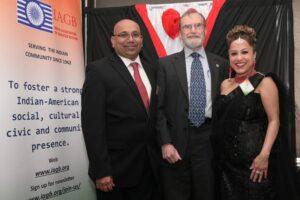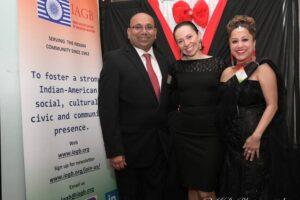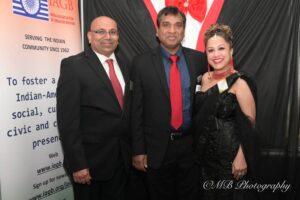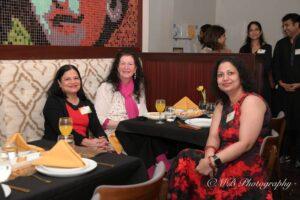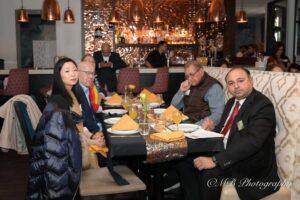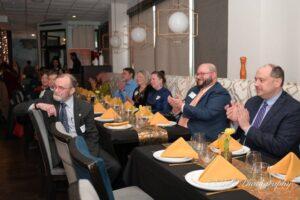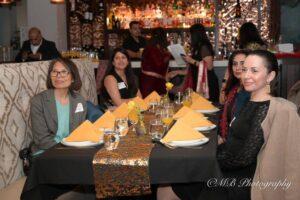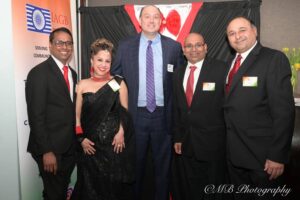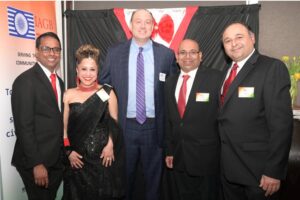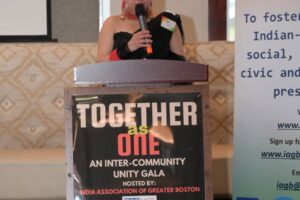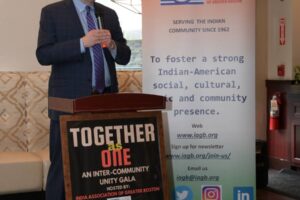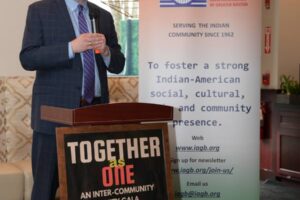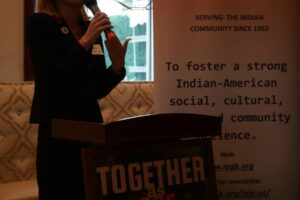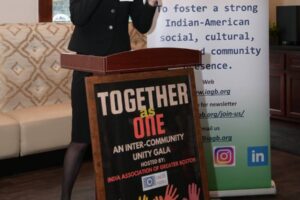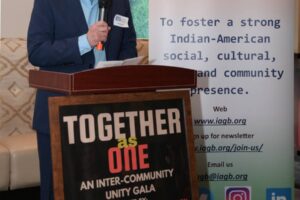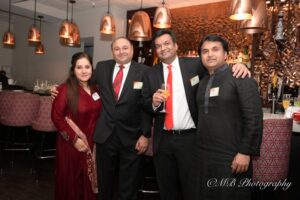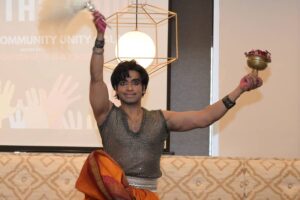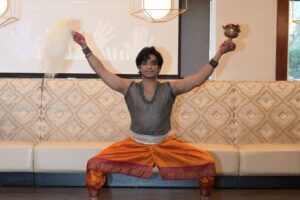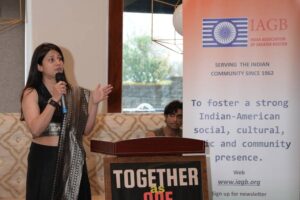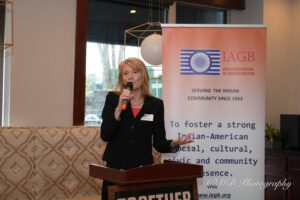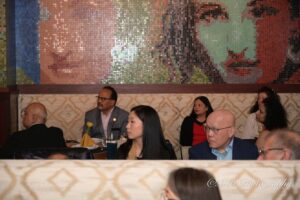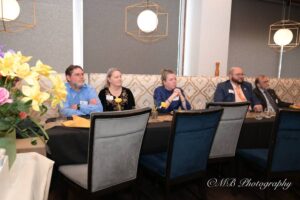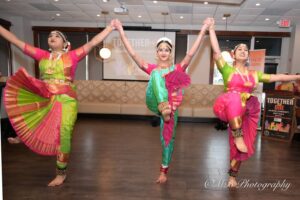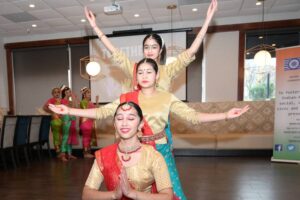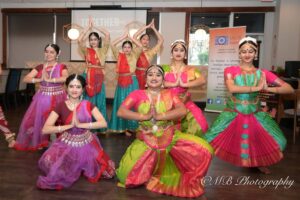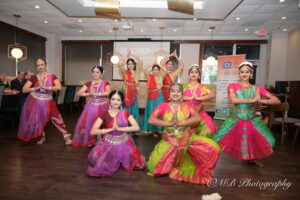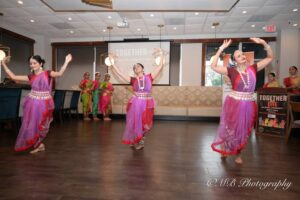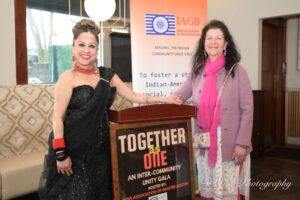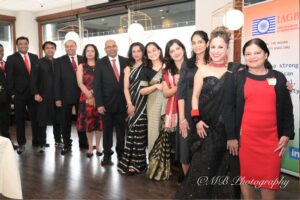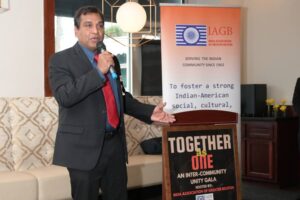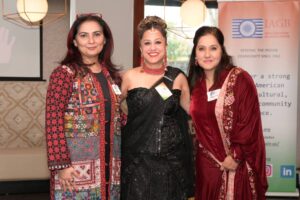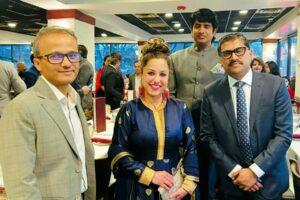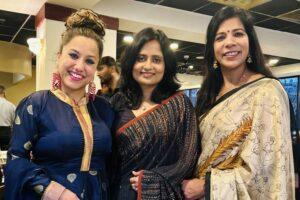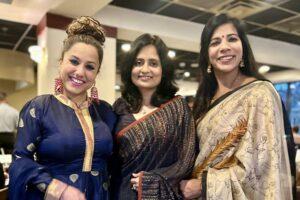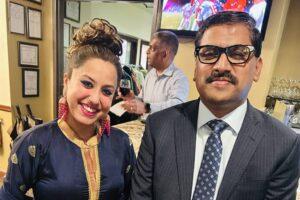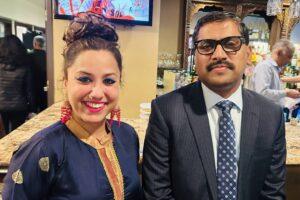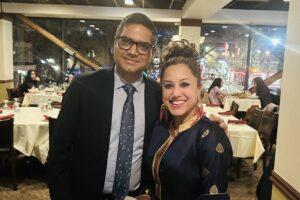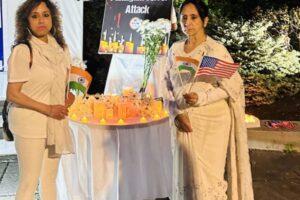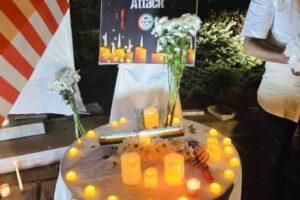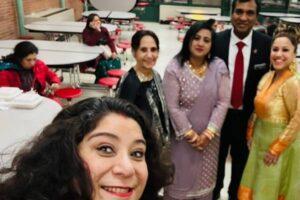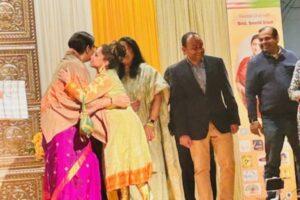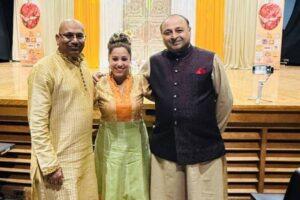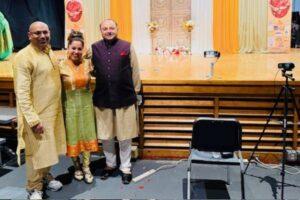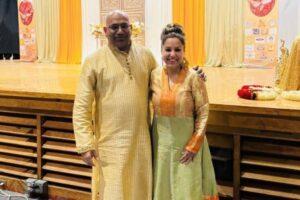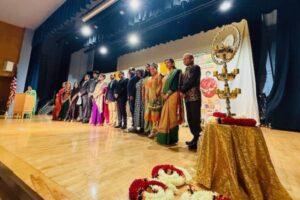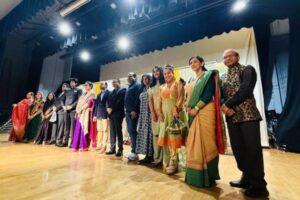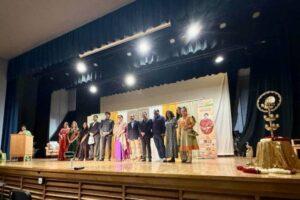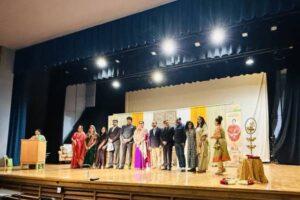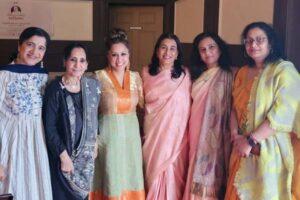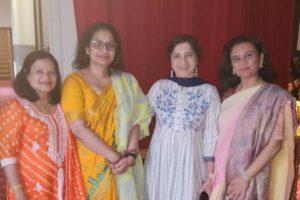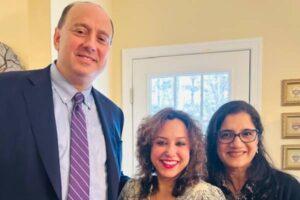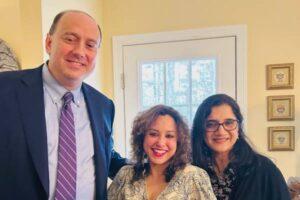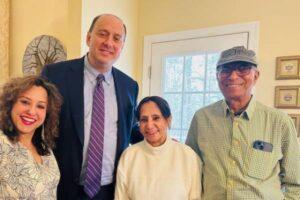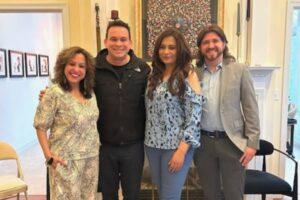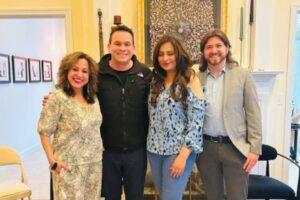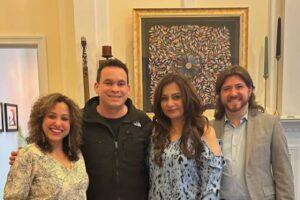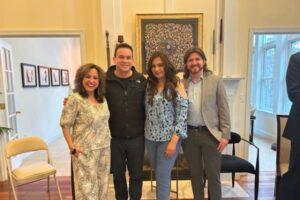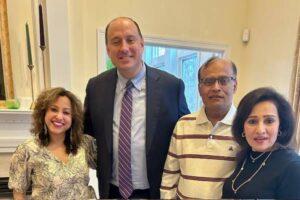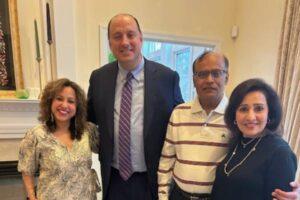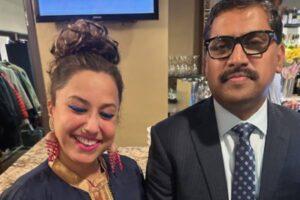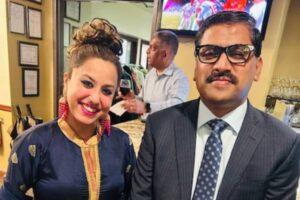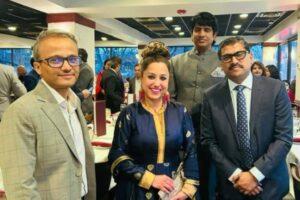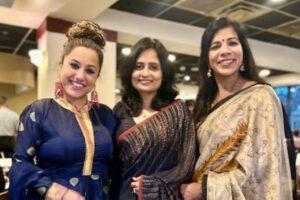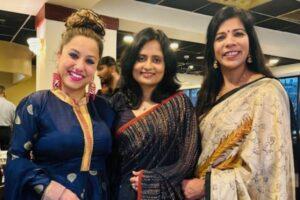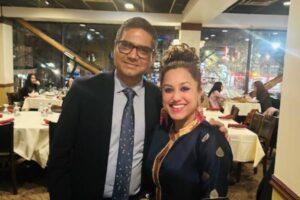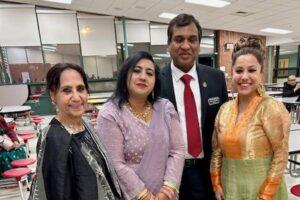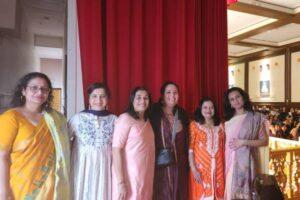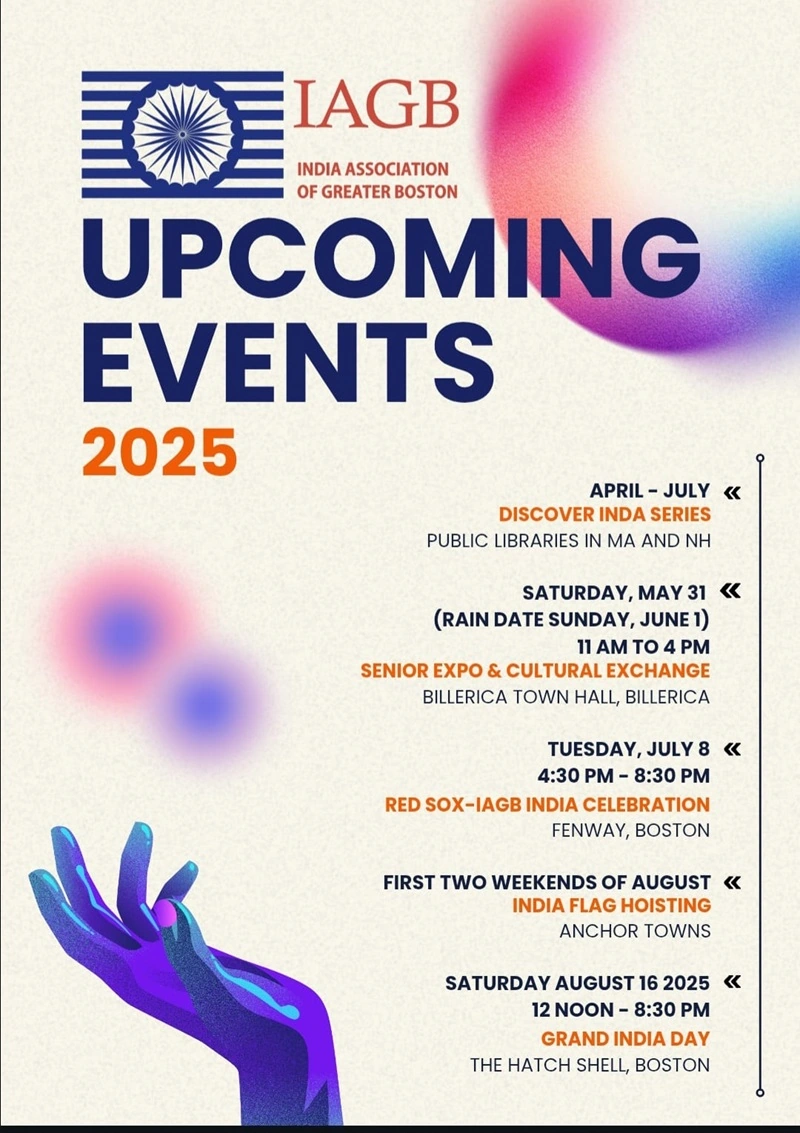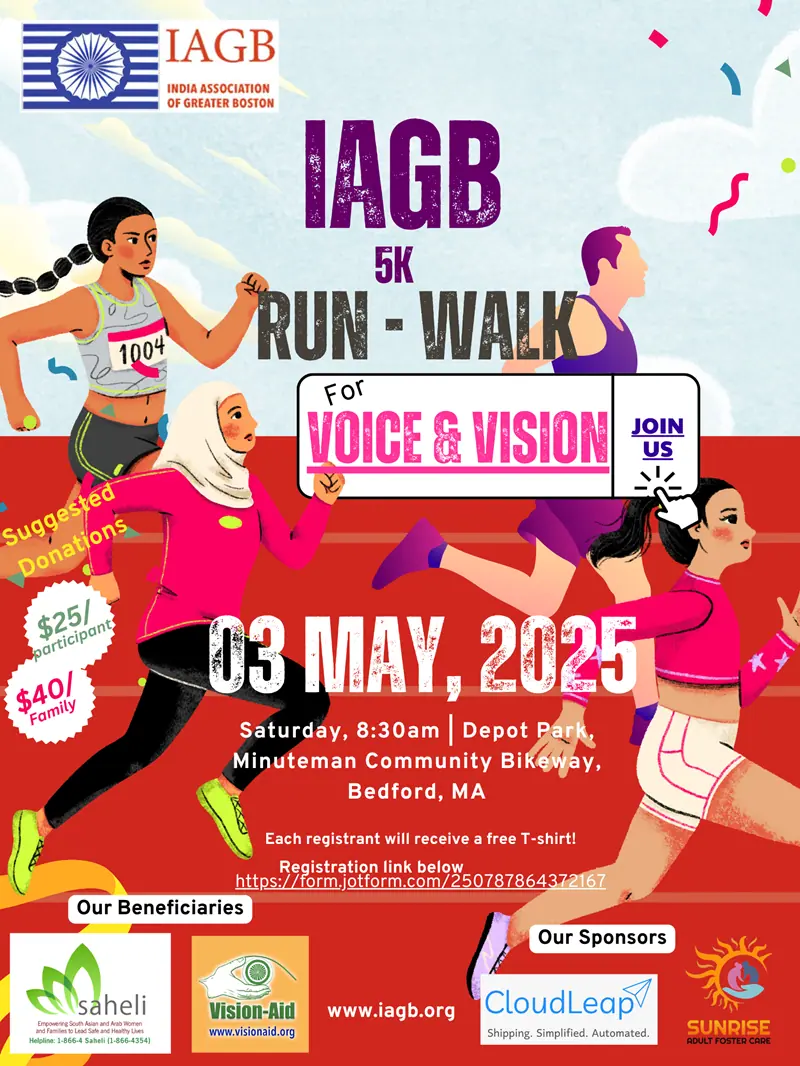May 2025
Events Recap
Cloting, Bedding & Shoes Drive
We Did It—Together!
Thanks to the incredible generosity of the community, our Clothing, Bedding & Shoes Drive was a massive success! In collaboration with Twynphony Hopes Foundation and The Epilepsy Foundation, we collected 200 bags of Clothing, Bedding & Shoes to donate to the Epilepsy Foundation and support Vision Aid in their noble work of offering services for the visually impaired.
Every bag donated is more than just fabric—its hope, impact, and a step towards a wholesomely empathetic community. Every penny earned from these generous donations was collected from the Epilepsy Foundation was donated to Vision Aid.
Thank you everyone who donated, shared, volunteered, and helped us spread the word. This is what a community looks like!
Thank you Twynphony Hopes Foundation and Epilepsy Foundation, for your phenomenal collaboration for the greater good!
Inter-Community Unity Gala: “Together as ONE”
Welcoming the New Consul General of India in Boston – Mr. Raghuram S.
Dear Community Members,
It is with great pride and joy that we share an important milestone for our Indian-American community in the Greater Boston area.
The Government of India has officially established the Consulate General of India in Boston, marking a historic and long-awaited step in recognizing the growing presence and contributions of the Indian diaspora in New England.
We are especially honored to welcome Shri Raghuram as the first Consul General of India in Boston. Shri Raghuram brings with him deep diplomatic experience, a strong commitment to public service, and a vision for closer engagement with the Indian American community.
This development will make consular services more accessible to thousands of families, students, and professionals in our region. More importantly, it symbolizes the strengthening of ties between India and our local community — culturally, economically, and diplomatically.
As the India Association of Greater Boston (IAGB), the oldest and the largest community organization of New England, and as an organization that strives to work together to build a stronger wholesome community, we look forward to working closely with the Consul General and his office to support our community, promote India’s culture and heritage, and serve as a bridge between cultures.
Please join us in welcoming Shri Raghuram to Boston — we are excited for this new chapter!
Warm regards,
Tanu Phoenix,
President, India Association of Greater Boston (IAGB
- With NY CGI Binoya Pradhan & Boston CGI Raghuram S
- With NY CGI's wife Monalisa Pradhan (in the middle)
- With NY CGI's wife Monalisa Pradhan (in the middle)
- With Raghuram S
- With Raghuram S
- With NY Deputy CGI Vishal Jayeshbhai Harsh
Statement from the President – India Association of Greater Boston (IAGB)
Condemning the Terror Attack in Pahalgam, Kashmir
On behalf of the India Association of Greater Boston, I express our deepest sorrow and strongest condemnation of the recent terror attack in Pahalgam, Kashmir. We are shocked and heartbroken by this brutal act of violence, which claimed innocent lives and left many more injured and grieving.
Kashmir has long been celebrated as a heaven on earth — a land of breathtaking beauty, spiritual depth, and cultural richness. It is precisely this serenity and harmony that such acts of terror seek to disrupt. As a community rooted in the values of peace, unity, and shared heritage, we believe it is our collective responsibility to uphold the essence of Kashmir — not just as a place of natural beauty, but as a symbol of coexistence and resilience.
Terrorism in any form has no place in a civilized society. These senseless acts not only bring tragedy to families but seek to destabilize peace and harmony in a region rich with culture, resilience, and history. As a community built on the values of peace, unity, and cultural strength, we stand in firm solidarity with the victims and their families, and with all those working toward peace and justice in the region.
We urge our community to continue upholding the ideals of compassion, non-violence, and mutual respect that are at the core of our shared heritage. Let us honor those we lost by remaining committed to building bridges, not walls, by working together to build a stronger community, and by advocating for a world free from hatred, division and fear.
Our thoughts and prayers are with the victims and their loved ones during this difficult time.
In solidarity,
Tanu Phoenix
President, India Association of Greater Boston (IAGB)
A Meaningful Weekend of Civic & Community Engagement (April 13 & 14)
What a fulfilling weekend it was, for Team IAGB — immersed in the energy of community togetherness and the spirit of civic engagement! From heartfelt conversations to inspiring gatherings, this weekend was a beautiful reminder of the power of showing up, connecting, and working toward something greater together.
Grateful for the people, the passion, and the purpose that make our communities stronger. Every event we attended left us more hopeful, more grounded, and more committed to the work ahead.
Here’s to community, service, and standing together — ALWAYS. Together We Thrive!
April 13: An event that was organized by women leaders at BAPS, an event by women, with women and for women – female members of IAGB Executive Committee were honored & felicitated as women achievers.
April 13: IAGB was one of the host organizers for this civic awareness event, A Fireside Chat with Smriti Irani, distinguished Indian politician, a dynamic woman leader, an ace actress, a television producer and a trailblazer in public service.
Attending the Fireside Chat with Smriti Irani was nothing short of inspiring, as her words carried not just wisdom, but power and purpose.
What made the experience truly fulfilling was her authenticity — she spoke candidly about her journey from the entertainment industry to the heart of Indian politics, highlighting the importance of resilience, conviction, and the courage to challenge the status quo. Hearing her speak about navigating leadership as a woman in spaces often dominated by tradition and resistance was especially impactful. One of the most memorable moments was when she spoke about the importance of integrity in leadership and how public service is ultimately about staying rooted in empathy. It was a powerful reminder of why representation matters — and how each of us, in our own ways, can contribute to change. Leaving the event, we felt energized and reflective — not just about her achievements, but about the broader role of women in shaping policy, driving impact, and holding space in leadership with strength and grace. IAGB is delighted to have the opportunity to be one of the host organizers for a fireside chat with such an influential voice.
April 14: IAGB President Tanu Phoenix was in the Host Committee for the annual Indian fundraiser for Senator Jamie Eldridge, IAGB’s staunch supporter and advocate of the Indian American community.
A Meaningful Weekend of Civic & Community Engagement (April 13 & 14)
India Association of Greater Boston (IAGB) wrapped up a unique event on Sunday, April 6, in Burlington, at the Treasury Indian Kitchen – an exclusive luncheon event named “Inter-Community Unity Gala: “Together as ONE”.
Our hearts are full, and our spirits are lifted after the incredible success of our trendsetter “first time ever” Inter-Community Unity Gala: Together as ONE. We’re still feeling the powerful energy from our first-ever Inter-Community Unity Gala – a groundbreaking, purpose-driven celebration that brought together leaders, changemakers, and community members from across cultures, communities generations, and sectors.
This special Gala aimed to bring together members of the non-Indian, diverse communities at large, to celebrate unity, collaboration, and shared values. As an advocate of community collaboration, trust, open communication, shared goals, mutual respect, shared responsibility & accountability, IAGB designed to bring together diverse communities outside of the Indian diaspora to celebrate collaboration, understanding, and shared values. IAGB President Tanu Phoenix said, “The gala aimed to foster relationships, build bridges across different groups, and promote inclusivity, respect, and unity.”
IAGB Vice President Nilesh Agrawal said, “As a trailblazer that it has always been, IAGB takes pride in being the pioneer of a unique event in the New England area – the Inter-Community Unity Gala – Together As ONE is a “FIRST TIME EVER”, special event emphasizing both celebration and collaboration!”
The gala stands as a trendsetter and a powerful testament to the importance of fostering inclusivity and solidarity among all. The gala was attended by elite individuals, organizations, and cultural groups from various communities (primarily non-Indian) to understand the ethos of the Indian American community and celebrate diversity, promote mutual understanding, and strengthen social bonds.
IAGB President Tanu Phoenix added, “At the heart of our gala, was a commitment to fostering collaboration and unity. Through mingling, sharing thoughts, cultural performances, guest speakers, and eating together, we celebrated unique traditions, values, and perspectives of the participating communities.”
“IAGB’s Inter-Community Unity Gala was not only a celebration but a statement of solidarity, embracing the beauty of diversity while emphasizing the importance of working together towards common goals”, commented IAGB Vice-President Nilesh Agrawal.
While sharing the optics of the gala, IAGB Director Arpita Pathak said, “The afternoon featured welcome drinks, mouth-watering appetizers, an extensive Indian Fusion lunch, networking, mingling, a uniquely designed live entertainment segment, an IAGB presentation advocating its work within and beyond the community; along with, speeches from Keynote speakers & acknowledgements of the invited guests.”
IAGB Director Shital Bhammar added, “This was an exclusive, ‘Individual Invitation only’ purpose driven, impact gala comprising a distinguished gathering of individuals and organizations (primarily non-Indian) committed to making a positive impact on the mainstream community, and thus served as a platform for people from different backgrounds to come together, engage in meaningful dialogue, and enjoy a fulfilling afternoon of shared experiences.”
The gala provided an opportunity to meet leaders and individuals (primarily non-Indian) who have made significant contributions to promoting peace, understanding, and social harmony such as:
- Community leaders and co-leaders from various cultural, ethnic, religious, faith-based and social backgrounds.
- City Mayors and Town Selectboard members
- Community leaders, activists, and influencers.
- Leaders of local businesses and organizations committed to such inter-community developments.
- Senators and State/Government representatives who support such inter-community engagements.
“A dream endeavor saw its meaningful fruition when over 60 elite guests from across communities joined us for this momentous occasion that shone through as a memorable and inspiring afternoon”, said President Tanu Phoenix.
“Sunday April 6th afternoon left us inspired and more connected to the broader community and confirmed our motivation to work together to build a stronger community.” – said Vice President Nilesh Agrawal.
Arpita Pathak added, “We are overflowing with gratitude for Dr. Kohal Das for his unique Non-Classical dance presentation, Poppy Charnalia for her brilliantly written poetry ‘Blending’, to young musician Anaya Joshi for her western classical and Indian patriotic vocals and the classical dance performance by the super talented students of the 3 best dance Gurus we have, namely, Mouli Pal, Jayashree Balarajamani and Moumita Banerjee.”
Shital Bhammar added, “A huge THANK YOU to our incredible food, space & decor partner Dev Patil and Sujata Patil from The Treasury Kitchen for creating such a welcoming, vibrant environment at our Inter Community Unity Gala — from the delicious bites to the stunning setup, they helped turn this gathering into an experience. And to our super talented volunteer Deepa Agrawal for creating the classy photo booth and transformed this corner into a space of unity, culture, and celebration.”
From the powerful voices of the keynote speakers to the joy on every face in the room, the afternoon was a true celebration of connection, culture, and collective impact. From the inspiring chats with inter-community leaders to the unforgettable live cultural presentations, to the delectable spread satisfying our appetites, every moment of the afternoon served as a testament of what’s possible when like-minded change makers from across communities come together—not just side by side, but as ONE.
IAGB thanks all the inter community of changemakers, leaders, and supporters who came TOGETHER across differences to stand united for a shared future rooted in equity, inclusion, and love.
Team IAGB thanks everyone who made this moment possible—every guest, volunteer, speaker and performer, for making this gala unforgettable. “We witnessed what unity looks like, what ONE community feels like. We thank leaders across communities for being part of this bold and beautiful beginning. Let this be the first of many. Here’s to continue the work, together. The movement continues…….” – concluded President Tanu Phoenix.
Wellness Column

A Yoga Garden of Peace By Tara Rachel Jones, M.Ed., RCYT, Founder and Principle Teacher of Flower Yoga, RCYS
What is A Yoga Garden of Peace?
Teaching yoga effectively with toddlers, children, youth, teens and families takes three major components:
- A “calling” or an “Aha” moment arises in distinct ways such as dreams, experiences, vision quests, studying a spiritual philosophy amongst many others… We know as yoga teachers, transformation arises through practice. We find ourselves saying, “ If I can find peace, I want to bring it to others.” The gemstone of the practice is the desire to share it, possibly, with other adults, but—you love toddlers, children, youth, and teens! You say to yourself, “How incredible it would be for young people to have this practice as an active part of their lives!” You have experienced the effectiveness of the “tools” of yoga practice and you “know” it works. This “inner knowing” becomes the ignition for your mission to teach yoga to this unique population!
- Skills: Whether or not you have a distinct professional background working with young people, you have to get trained to teach yoga. During the training, you learn about what makes a yoga class for young people quite different from teaching adults. You also discover that each stage of human development has a particular approach when it comes to creating an age-appropriate yoga class experience. You learn a wide range of techniques, games and strategies, do your practice teaching and get certified.
- Experience: Experience is your only true teacher and learning lab. During this time, you harness the absolute meaning of humility, flexibility, accountability and relationship. Embarking on the journey, you realize what you have yet to learn. Especially, in moments of challenge, you might tell yourself, “My tool chest is full, but getting the class to unfold is puzzling me.” We have all been there in some way, wondering how to get the whole group or an individual child to behave, to stay with the class and to get the games and techniques to take effect like you practiced in your training! Yes, even the most experienced teachers can encounter these moments. It is at this juncture; the YOGA of teaching yoga to children begins!
Re-Defining Discipline
When invited to write this article about “Behavior and Child Development,” I began to ponder the phrases classroom discipline vs. behavior management. The word discipline comes from the Latin root-disciple defined as pupil, student, and follower. In the teachings of yoga, the disciple “falls to the feet of the Guru.” The Guru (Sanskrit name for teacher) has a task: to guide the student to find the “teacher within.” The Yogi sees discipline as a path to know thyself, rather than a forced modification made from the outside. The word behave has several intriguing meanings; conduct oneself, to act properly and to act or react under given circumstances. By definition, both words truly describe similarly that the source of self-regulation comes from “within.” While it makes sense to imagine the seed of true focus to come from our inward being, it can be an overwhelming dilemma when working with young people. They have not yet developed the capacity to grasp this subtle experience!
Our job is not to make them GET IT, but to weave an intricate garland (in Sanskrit-Mala) of experiences that intersect with both the collective nature of the human being at a given age and see each one as an unfolding individual. Yoga is a life long endeavor. It is a way of life that honors the present moment as fuel and foundation for learning from the past, while simultaneously; harnessing the courage to move forward with confidence in one’s self, others and the world at large.
Behavior Management is, therefore, viewed by the Child/Teen-Yoga Teacher as an opportunity to become present, to become acutely aware of how the children are reacting/responding to the yoga class and modify strategies that truly engage them. Children need structure, boundaries and follow-through. This is not a simple task for the teacher because it takes years of trial and error to find what “works.” Perseverance and Faith are derived from the distinct “calling” to do this work.
Engagement Recipe
No one can be you, nor be able to give you the wisdom that arises from years of experience, but recipes are a good start! Here is a Flower Yoga recipe for one way to weed your child/teen yoga garden!
At ALL ages, the senses play a powerful role in the regulation of the physical body, emotions and cognition, henceforth, behavior. There are four foundational senses that lay the groundwork for an engaging and well-managed child/teen-yoga class.
- The Sense of Touch relates to boundaries in the yoga environment such as: the yoga mat, any and all props. Inner-Touch relates to the “rules of the class that keep us safe. My rules are simple: Look (sense of sight-focus on safe ways to move the body), Listen (sense of hearing: cues, songs, rhythmic language storytelling) and Stay together (imitation of a worthy role model: the teacher). We do the practice together to maintain safety and create community.
- The Sense of Life conveys the consistent and predictable rhythm of the class. When we know what is happening, we can relax and become present. It is from that place that that creative qualities of joy, spontaneity and surprise percolate in a safe way. For example, you might have a place in your class rhythm where you tell a story. In my class, it always happens after the sun-salutations. The children expect a story, but the story can change within an expected class structure.
- The Sense of Self-Movement is associated with proprioception. Connie Helms, movement educator and founder of Balance in Childhood and Adolescence states, “When orientation is experienced first hand, then children build an internal map of what is where – in their body and in their world.” When we teach postures to children, give consistent cues. The Flower Yoga approach to teaching asanas is definitively related to earlier stages of reflex and movement integration. If you are not using a visual system yoga mat, the children need a series of baseline posture that give them a sense of special orientation. For example, “To make the Dog pose, start by putting your hands down, knees down and belly up (cow pose). Tuck toes down and lift knees up (dog).” Scaffold new poses over “known” poses and children gain a sense of mastery of where to place their bodies in space. As they build this skill, children activate the inner muscle needed for self-movement- Willpower!
- The Sense of Balance correlates with physical balance, spatial orientation and emotional regulation transmitted to the brain via sensory receptors inside the inner ears. Exploring balance in a yoga class on a physical level can be done practicing postures on one foot, but also postures and movements that differentiate the right and left side of the body, up/down and front/back.
Have a clear understanding of Child/Teen Development at different ranges. Be diligent in your study and become proficient in noting observable patterns in human development and human nature. As you mature with this skill, you will walk into any situation and be able to meet the challenge with confidence and the ability to lead the class in a meaningful experience.
EARLY Childhood (0-6year-olds)
Highlights for behavior management
Finger Plays
Rhyming/Movement Songs
Circle Games
Puppetry
IMAGINATION
SENSORY EXPLORATION AND PLAY WITH PROPS
Simple Breathing
Repetitive and Rhythmic STORIES
LARGE ROUND MOVEMENTS
“Follow-able” yoga poses and movement games
Consistent Cues and language on how to get in and out of poses
MIDDLE Childhood (7-11year-olds)
Highlights for behavior management
Challenging and Rhythmic movement Games with props
Speech verses with eloquent language and uplifting folk songs
Distinct and Simple Breathing Practices
More articulate posture cues with distinction of left/right
Myths, Legends, Folk Stories that leave an inner-character impression
Games/Partner Poses
Artistic Expression
ACTION/REST
YOUTH (11-14yrs) /TEEN (15-17yrs)
Highlights for behavior management
ACTIVE REST
Inspiring Stories that address inner/social/academic/family/life challenges
More articulate postural cues
Explanation of the both physical and mental posture benefits
Group/Partner Poses
Artistic Expression
DEEP RELAXATION
Putting the recipe into PRACTICE!
You have ignited your awareness with the underlying features (listed above) that will engage all ages, you walk in to teach yoga, and self-regulation is NOT happening – it’s a constant challenge to get the group together. No one is “behaving.”
Do not give UP! You can do it! They are not behaving because they NEED something: inner/outer Order!
Keep your class structure, be consistent and make the YOGA in every moment of interaction, even the TRANSITION of creating the order itself. That may be the yoga needed in that given moment. You maintain a clear vision of where you will take this group,
- Ground: Sometimes I have a group that comes into a yoga space, ready to sit on the mat and breath and we do this. Others need an active movement game/song/verse or finger play to bring the group together…I am clear about my expectations, even in this short experience, by making the actions themselves enticing to the group of children I am working with. If I need to assign mats, place the mats in one single row facing me rather than the idyllic circle, I will do this in order to create a successful initiative.
- Center: I always have a ritual that signifies a silence, which is preceded by imaginative or guided breathing. Guided meditation and inner-character goal is set at this time. It is a threshold for entering the “yoga” space.
- Action: Yoga Asana class has a simple order with the goal of including a group game and at least one partner pose. I usually have a set time by which I want to place this activity and will often offer these privileges once the children have developed the capacity to stay connected to the class rhythm.
- Rest: There is a distinct ending with an imaginative journey and guided relaxation. I use a consistent thread of language so that the child/teen can rest into the routine of the relaxation process. They fidget at first, but over time, they can relax because they internalize the process.This can be as short as 1-2 minutes and as long as 10-12 minutes.
Even when the class has a bumpy or less than smooth start, I use the strength of consistency, repetition (games/poses/stories that support harmonic patterns of social/emotional and physical self-regulations) and flexible determination to establish the behavioral tone that makes the class manageable.
There are times when children have inner deregulation that stirs up their behavior in unfavorable or difficult ways that make maintaining the class routine less tangible. Then, I rely on my understanding of the four foundational senses, as a compass for bringing to the group or child what is needed.
COMMUNICATION
Although you have taken a children’s yoga training, which encompasses a yoga tradition, be sensitive and respect the culture of the population you are serving. If you are working in a school, get to know the school philosophy and perspective of the teachers. In turn, educate the school, organization or parent-body about the benefits of yoga for children/teens and acknowledge your desire to co-create a successful program for everyone.
- ADAPT the teachings, its tools and techniques in a way that is accessible to the environment you are working in.
- ADJUST yourself and be flexible with your strategies while remaining steadfast with your program effectiveness. You will likely learn more from your experience that, what may work with one group of children, does not with another. At the same time, you will discover a thread of repetitive processes that elicit a positive and similar response of the age group you are working with. These pieces become a staple in your teaching routine.
- ACCOMMODATE (have compassion and empathy) to all aspects and factors that have an influence on child/teen behavior. Here is a sample list: the beginning of the school year, change in weather pressure, holidays, ending of semester schoolwork, tests, death in a family, new sibling, moving to a new home, sensory integration challenges, social issues, trauma, stress, anxiety, mental illness, bullying…the list goes on. All of this influences the dynamic of the yoga class. KNOW your limits! Access help when you need it and collaborate with your colleagues who encounter similar challenges.
Ultimately, the management of any group relies upon your response to what is happening and how you redirect it. Knowing the developmental needs and capacities of the group of young people you are teaching, gives you the ability to MEET them when they are unclear about how to ground themselves. Establishing your inner realm in this direction, you will plant A YOGA GARDEN OF PEACE.
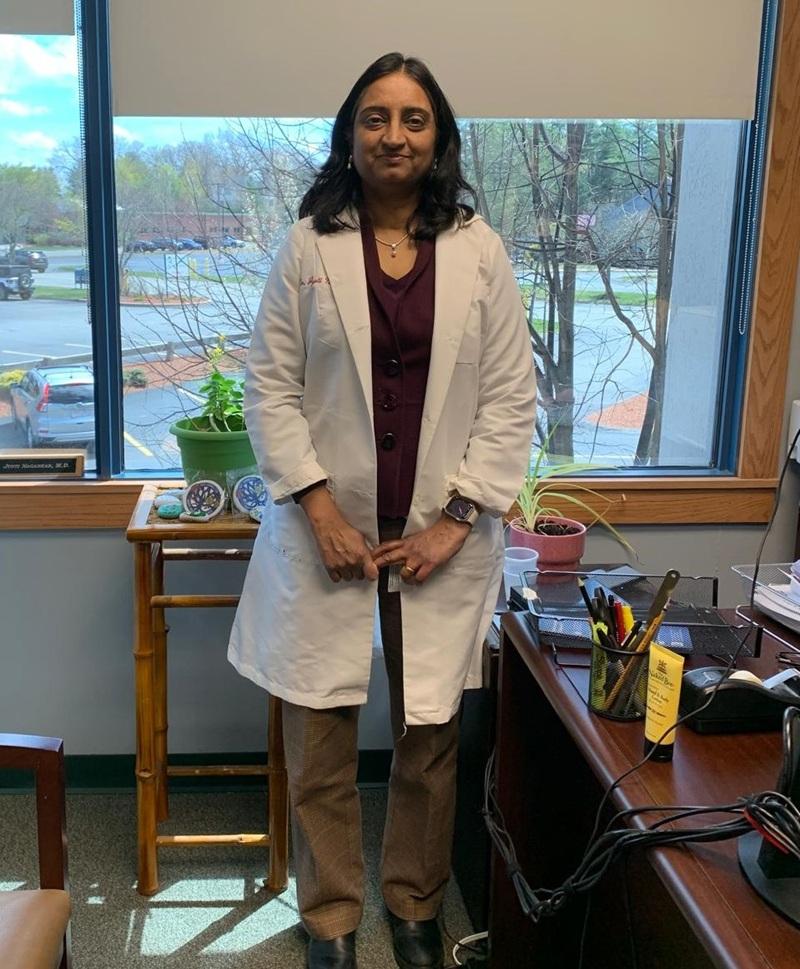
Dr. Jyoti Nagarkar MD Internal Medicine Lead Physician- Montachusett IM Instructor - UMass Medical School, Worcester, MA.
Preventive Health Screenings
It is rightly said, “Prevention is better than cure.”
Nowhere is this more applicable than in the early detection of diseases—allowing treatment to begin before complications develop.
As a primary care physician practicing for over 30 years, I have seen time and again how early detection has saved lives. In this article, I will focus on screening for the most common chronic health conditions and cancers.
When a patient visits the doctor’s office, checking vital signs is routine—and measuring blood pressure is a key part of that. It helps detect hypertension, which is diagnosed when blood pressure is consistently above 130/80 mmHg. Elevated blood pressure does not always cause symptoms. However, it is often called a “silent killer” because it can quietly damage major organs, including the heart, kidneys, and eyes. It is also a major risk factor for stroke and heart attacks. Once diagnosed, high blood pressure can be managed through diet, exercise, lifestyle changes, and medications if needed.
Screening for diabetes is recommended in all adults who are overweight or obese. A simple blood test can detect diabetes by measuring fasting blood sugar or hemoglobin A1C, which reflects your average blood sugar over the past three months. Diabetes is typically diagnosed if your fasting blood sugar is above 126 mg/dL or your hemoglobin A1C is 6.5% or higher. Some people may experience symptoms such as increased thirst, frequent urination, weight loss, or blurred vision—but not everyone has symptoms. That’s why screening is crucial. Diabetes can be managed with lifestyle changes, including reducing carbohydrate intake and exercising regularly, along with medications if needed. If left untreated, diabetes can cause long-term damage to organs, leading to blindness, kidney failure, nerve damage, and other complications.
Cancer screenings are equally important. Early cancer detection is associated with higher cure rates and better outcomes. The U.S. Preventive Services Task Force (USPSTF) recommends specific cancer screenings.
Breast cancer is the most common cancer in women, affecting about 1 in 8 women. While some cases are linked to genetics, the majority occur without any family history. The USPSTF recommends screening mammograms every two years for women aged 40 to 74. Women with a family history of breast cancer may need to start screening earlier and may be tested for BRCA1 and BRCA2 gene mutations. These genes increase the risk of both breast and ovarian cancer, and appropriate genetic counseling and additional screenings may be necessary.
Cervical cancer is the fourth most common cancer in women globally. It is screened for using a Pap smear. The USPSTF recommends Pap smears every three years for women aged 21 to 65. Between the ages of 30 and 65, it’s also recommended to add HPV ( human papilloma virus) testing. Alternatively, women may opt for co-testing with both the Pap smear and HPV test every five years.
March is National Colorectal Cancer Awareness Month. For individuals without symptoms or a family history of colon cancer, screening should begin at age 45. This can be done through a colonoscopy or stool-based tests such as Cologuard or the FIT test, which detects blood in the stool. Colonoscopy involves taking a bowel preparation the day before and undergoing the procedure with a gastroenterologist. If polyps are found, they can be removed during the procedure. Cologuard, on the other hand, detects abnormal DNA in stool and can be done with a sample collected at home.
Lung cancer screening is also important. The USPSTF recommends annual low-dose CT scans for adults aged 50 to 80 with a 20 pack-year smoking history who currently smoke or quit within the past 15 years. This test can help detect lung cancer at an early, more treatable stage.
These screenings can help identify health issues before they become serious and give you a greater sense of control over your health.
While the above are general screening recommendations, individual risk factors and health history vary. You should discuss personalized screening needs with your primary care physician during your annual physical.
To learn more, visit the USPSTF website for a full list of recommended screenings:
Community Spotlight
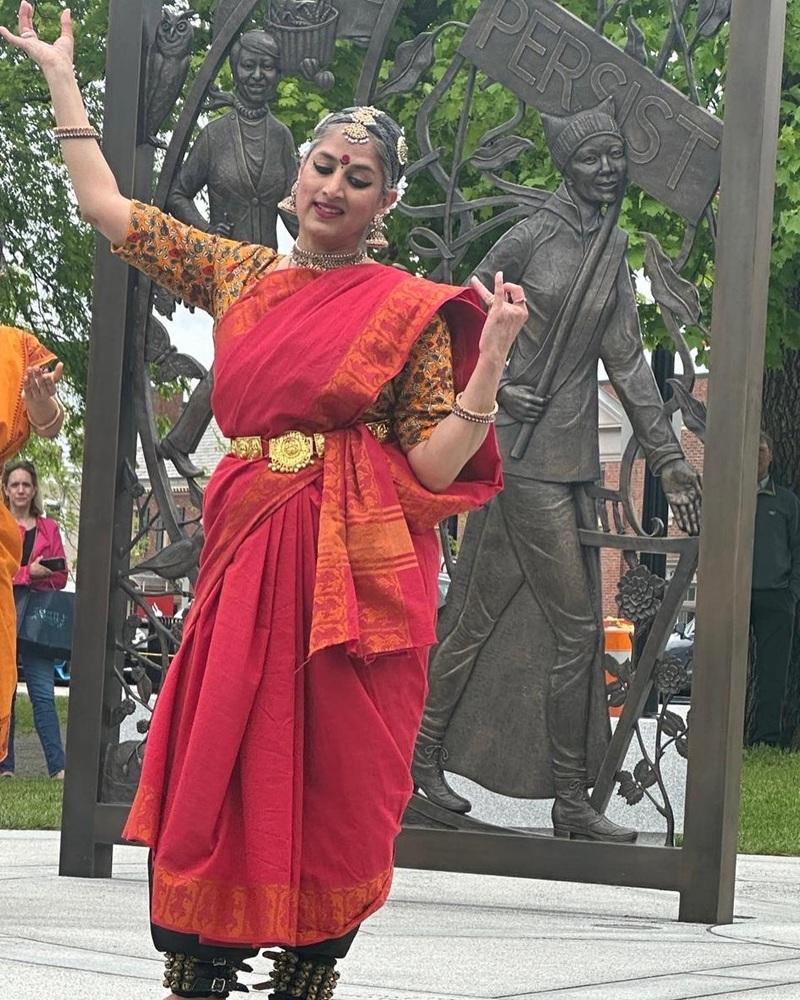
Jayshree Bala Rajamani
Jayshree Bala Rajamani is one of the leading practitioners and teachers of the ancient Indian dance form of Bharathanatyam in Massachusetts, USA. She was initiated into this art by her mother and then came under the tutelage of eminent Guru, K.J. Govindarajan. She specialized in Abhinaya with Guru Jamuna Krishnan.
Continuing her Guru’s legacy, she founded Bharathakalai School of Dance in 1987.
Over the years she has received numerous awards and accolades for both performing and teaching. For the past 10 years she had been teaching Bharathanatyam to children at the Davisville Middle school in Kingston Rhode Island. In 2025 she was invited to a ceremony organized by the Rhode Island State House, felicitating the teacher who she has partnered with for “contributions to improve the understanding of AANHPI culture and history”.
In 2021 LexSeeHer organized by the Town of Lexington honored her by giving her a Visibility Banner for her service through dance, for the community. In 2019 she had a successful performance tour of India to rave reviews.
2012 marked the 25th Anniversary of her dance school and her imparting training to multiple students both in India and now in the greater Boston area. The Massachusetts House of Representatives honored her with a special citation on this occasion:
“We celebrate and honor your passion, your art, and your loving devotion. You have immeasurably enriched your students and your community.”
In addition to her ongoing teaching commitments, Jayshree also conducts Lec-Dems on Bharathanatyam at different schools, universities and museums. She has been collaborating with non-traditional musicians and dancers, showcasing not merely her own versatility as an artiste but also the versatility of the dance form – to much critical acclaim. A few collaborators include World Jazz Ensemble Natraj, Tap Dancer Ryan Casey, Colonial Dancers from Lexington etc.
In 2015 she created the “TriNethra: The Third Eye Festival of Dance”, aimed at celebrating and promoting dance and dancers in the Greater Boston Area and from around the globe. This is a truly selfless act wherein established and upcoming dancers are featured in an elegant and involved setting.
Jayshree has a Master’s degree in Mass Communications from the Mass Communication Research Center, New Delhi.
“Jayshree was resplendent, and her expressive eyes and exquisite footwork worked magic on the audience.” – The Hindu, Hyderabad India, Aug 24, 2014
“Combination of Bharathanatyam – an Indian classical dance form, acclaimed jazz music and different world music tradition is not very often taken together on one stage. It was very carefully handled by a stunning effort of talented artists like Jayshree & all members of Natraj band in bringing out the essence of multicultural collaboration.” – Lokvani, e-Newsletter, October 10, 2010
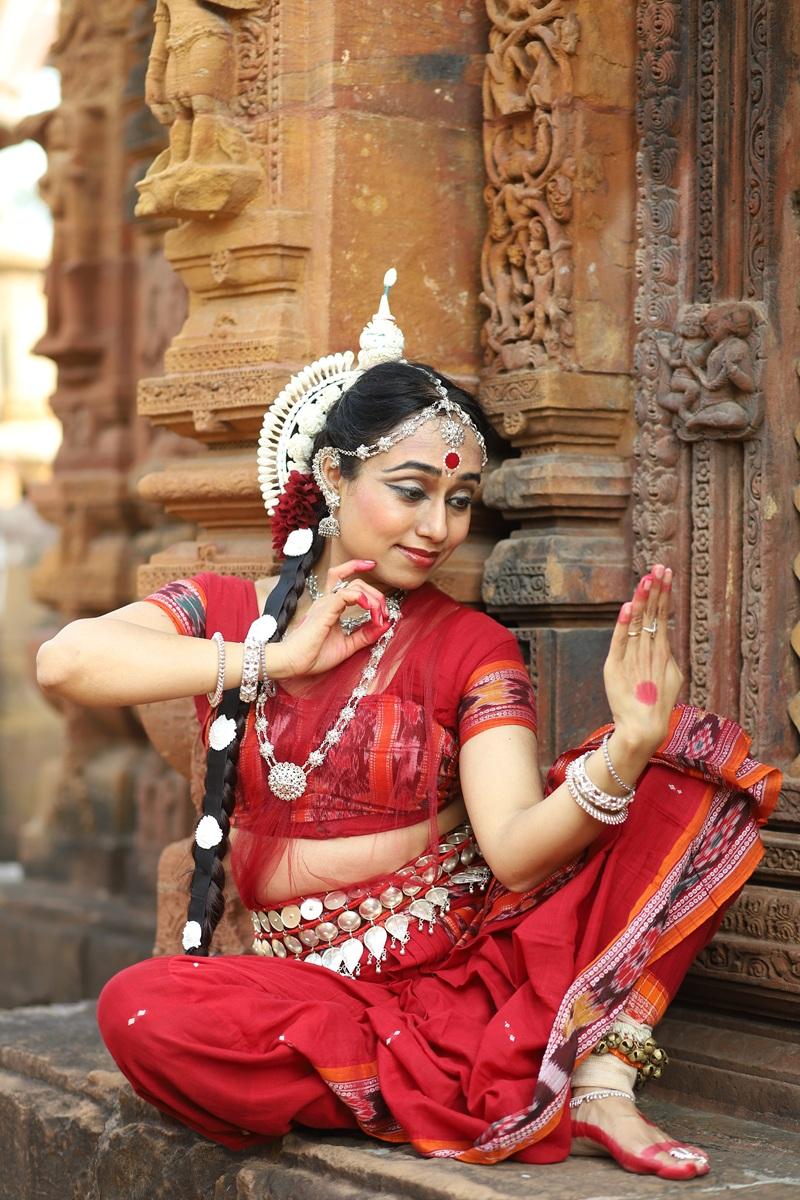
Mouli Pal
Mouli Pal has been a resident of Wilmington, MA since 2002 and over the decades created an enriching life focusing on Odissi dance. A captivating performer, dedicated teacher, choreographer and cultural ambassador, she has been intensively trained under the personal tutelage of the legendary Maestro Guru Kelucharan Mohapatra.
Mouli is a former Finance professional with a MS in Finance from Suffolk University and experience working in the Invesment Management in Boston. She, however, decided to immerse entirely in the world of performing arts and founded Upasana Odissi a Non-Profit for the promotion and preservation of Odissi. Upasana provides affordable lessons at four locations around Massachusetts and also offers scholarships to young deserving collegebound dancers.
Mouli frequently visits India to continue to learn and grow her repertoire and also conducts research on the history of dance at ancient temples of India. She is guided by eminent artists Smt. Nandini Ghoshal and Shib Narayan Banerjee in Kolkata.
Mouli is regularly featured by prestigious presenters across the United States, India and Austria. Her past performances include solo concerts at the prestigious Hopkins Center for Arts at Dartmouth College, Provincetown dance Festival, Munroe Center, Yuwa Bharati California, and Trinetra Boston.
In Spring 2024 Mouli was invited to a weeklong residency by the Arts Council of Tamworth in New Hampshire where she created a dance production for the students of K.A. Brett Elementary school and presented evening concerts for the community. She was also presented by the Hopkinton center for the arts for an evening length solo concert and featured by the Massachusetts AAPI Commission and the Southeast Asian Coalition of Central Massachusetts during the season. In summer of 2024 Mouli was invited by BlipCollective to perform at and lead a dance retreat in Ladendorf Austria.
She has received multiple awards and grants from the New England Foundation for Arts and Mass Cultural Council. In 2019 she was awarded the “Padmawati Rasthriya Award” by National Cultural Mission in Odisha. She promotes the dance as a “Way of life, for a balanced and mindful lifestyle” and mentors budding Odissi dancers of diverse age groups.
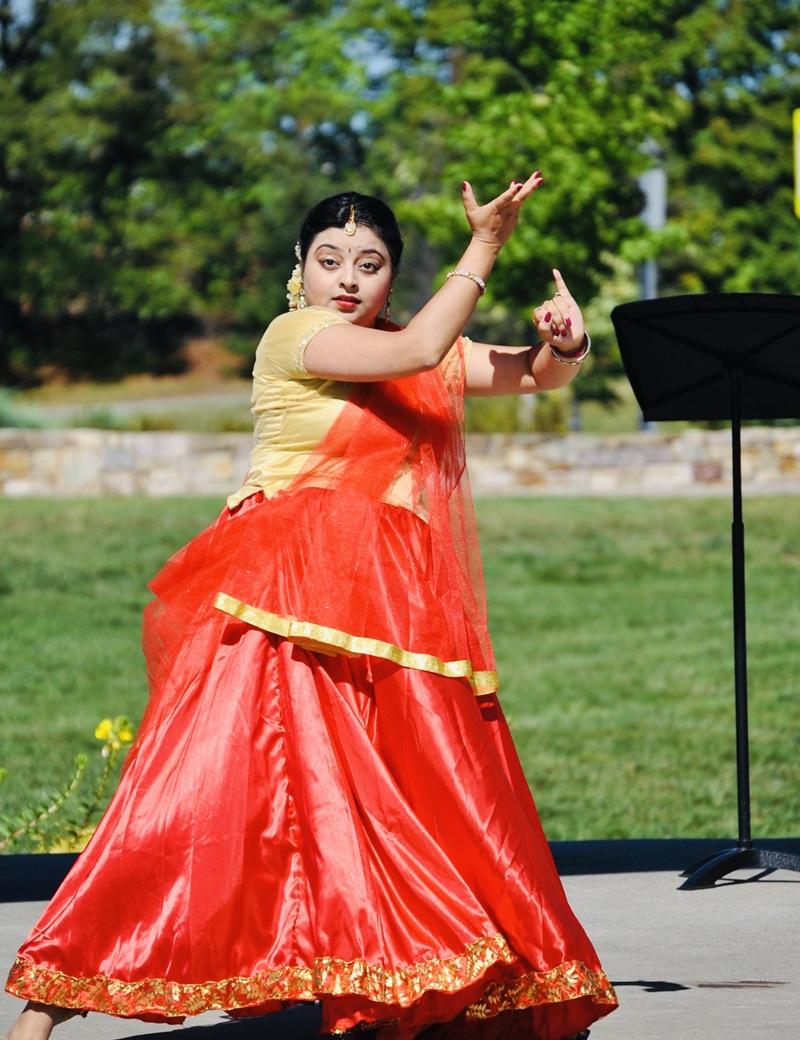
Moumita Banerjee
Moumita Banerjee is the Founder and Artistic Director of Tarana School of Kathak LLC (TSK). Born and raised in India, she moved to the United States in 2008. Moumita is deeply passionate about dance and finds joy and freedom in expressing herself creatively through music and movement. She is committed to promoting and teaching Kathak and is dedicated to ensuring that the tradition and values of this classical dance form are carried forward to future generations.
Since 2015, Moumita and her students have been actively collaborating and performing in programs organized by the India Association of Greater Boston (IAGB). She is also a strong advocate for women’s rights—championing equity and justice—and expresses these themes through her dance. She empowers girls and women to embrace their inner strength, Nari Shakti, through the circular movements, delicate footwork, and subtle expressions that define Kathak.
Moumita holds a Master of Performing Arts (MPA) degree in Kathak (Lucknow Gharana) from Bhatkhande Music Institute Deemed University, Lucknow. During her MPA, she distinguished herself in various aspects of Kathak, including stage performance, technical proficiency, and aesthetics. She also earned a Bachelor of Music (B.Mus.) degree from Banaras Hindu University (BHU), one of the largest and most prestigious universities in India and Asia, where she was awarded a Gold Medal for securing the first position in the university.
In addition, she completed the Prabhakar degree (equivalent to a Bachelor’s degree in Kathak) and a Senior Diploma in Kathak with distinction from Prayag Sangeet Samiti, Allahabad. Moumita has trained under legendary gurus such as Prof. Kumkum Dhar, Prof. Bina Singh, and Prof. Ranjana Srivastava, and has also received workshop training from Pandit Birju Maharaj, the leading exponent of the Lucknow Gharana of Kathak, and Ashimbandhu Bhattacharjee.
With over 15 years of performance experience, Moumita has choreographed and performed across India and the United States—including Florida, Texas, and Massachusetts—at various organizations and festivals. She also has extensive teaching experience in both India and the U.S.
To preserve the rich cultural heritage of Kathak and promote the traditional dance form, Moumita established the Tarana School of Kathak. She also works with children with special needs, supporting their development through Kathak. In June 2025, Moumita and her school made history by presenting the first Kathak Rangmanch Pravesh of one of her students in North America.
She is always delighted to share her passion for classical Indian dance with children and adults who cherish the art of Kathak as much as she does.
Community Conversations
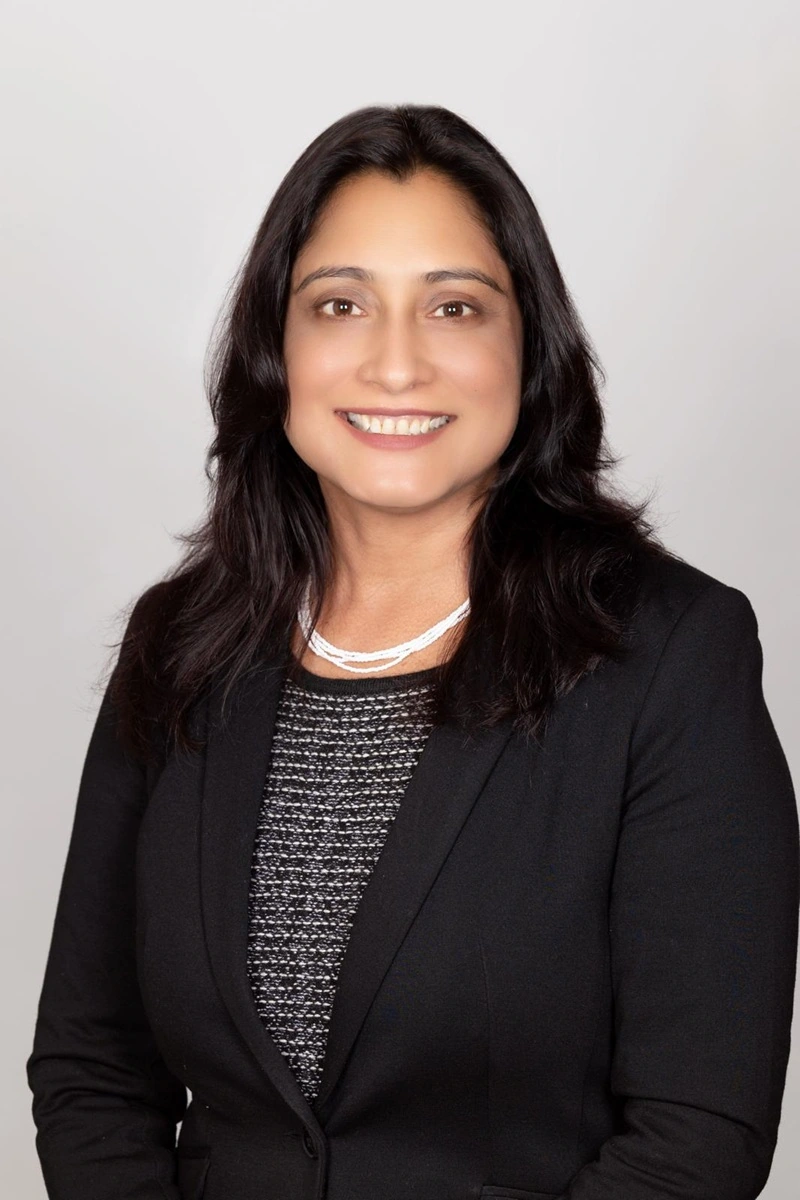
Abha Dogra
Hello!
I have been fortunate to serve as Chief Technology and Product Officer in public companies over the years, working across industries such as aerospace and defense, pure tech, manufacturing, and industrial automation. My 25-year journey in tech as a female of color has been filled with challenges, many of which I view as opportunities to excel. However, one recurring hurdle has been the initial skepticism and ignorance from peers in the early stages of my roles—an obstacle I have overcome by proving my contributions over time.
Balancing personal and professional responsibilities has always been a priority, with family coming first. I’ve consciously avoided relocation to maintain stability for my family, and as a team, we share life’s demands. I’ve also found freedom from guilt, a common struggle for working women, by embracing the imperfection of balance. I
believe that as women, we bring a unique focus to our roles, honed through the multitasking demands of being wives, mothers, friends, and professionals, which sharpens our time management skills. To young students, my advice is simple: carve out your own path. Don’t look up to anyone or down on anyone—your journey is uniquely yours.
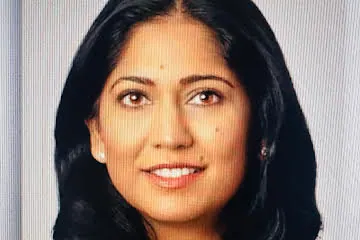
Aditi Taylor
Hello!
I serve as Executive Vice President and Head of Operations at an investment management firm. My career journey spans over the last 25+ years, a large portion of it working in consulting at a large, global advisory and consulting services firm. There I got the opportunity to work across and experience various industries, companies and cultures.
The challenges I faced as a woman (of color) were somewhat real, somewhat perceived and some most certainly self-imposed. Coming in from India (pre-globalization) certainly required a fair bit of effort to assimilate into corporate American culture at the beginning of my career. That was definitely real! I therefore have to become a completely different person than who I was and believed in was a more perceived challenge. I am glad I didn’t do that in retrospect and stayed true to my authentic self. Hard work was self-imposed as I truly believed that was the only path to success. That I don’t regret however and is still a principle I abide by.
Talent may be in-born, but hard work is an essential acquired trait and always remember that ‘Hard work can beat talent when talent doesn’t work hard!’ If you are committed to something, go all the way at 100%. If not, why bother going at all?
That said, balancing personal and professional life is not a one person job. You cannot do it alone, you have to have a support system, partnership and understanding with your loved ones to make it all work and not for once should you take that or them for granted. That would be my advice to the younger students wanting to follow in these footsteps. And know that you can never know it all, your career is a journey, not a sprint! The best paths are those that are filled with constant learning, reinvention, internalization and adaptation.
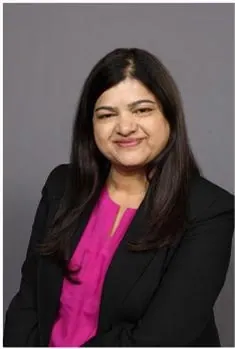
Asmita Khanolkar
Hello!
My name is Asmita Khanolkar and I work in the field of Medical Devices and Pharmaceutical Services, specializing in bringing innovative engineering solutions to healthcare. I have a Master’s degree in Engineering and over the past two decades, have had the opportunity to work on a number of new product development projects, including single-use, wearable, implantable devices, biotech and pharma products covering a wide variety of indications such as diabetes, orthopedic, vascular, women’s health, oncology, immunotherapy, inflammatory, chronic, crisis and rare diseases. As a speaker, I present at technical and research conferences and have authored publications. Outside of work, I have enjoyed volunteering as a mentor for robotics and innovation programs, coach for early professionals and a supporter and champion for girls in STEM, Women in Engineering and Women in Entrepreneurship.
Today, we are in an exciting era in medicine with a huge potential for innovation that can impact patients’ lives and bring benefits. As we move towards curative therapies and progress the science in these next generation fields, I feel we can do more to bridge the gaps in the areas of women led research, patents/IP and woman entrepreneurship. The technology advancements of today are best served if they encompass the voice of all for a balanced solution that covers everyone’s perspectives. The best solutions come from diverse creativity represented in technological and scientific developments. In my mind, this starts by planting the seeds of STEM early-on to develop these skills, to think outside of the box, inspire to experiment, engineer to build and lead towards problem solving. With advances in robotics, 3D printing, maker spaces, modeling, apps, research labs, AI, many resources are available and accessible to explore new ideas, scientific thought process and creativity. The message is really to get involved, try it out, STEM can be a lot of fun for everyone.



